Last summer I read two books: “Invisible” by the Spanish writer Eloy Moreno and “Invisible Women” by the British writer and feminist campaigner Caroline Criado Perez.
They apparently look quite different kinds of reading, but I felt they have quite a lot in common: they both talk about the problems that come from being invisible.
The first one, “Invisible“, is a novel that tells the story of a boy, who is a victim of bullying. He has a superpower too: when it needs to, he becomes invisible. Actually things are not so easy and straightforward and when you reach the last page of the book – which is addressed to younger readers, but also to adults (no matter if you are not a high school teacher) – you will understand better how invisibility can be a problem.
“Invisible women“, instead, is the kind of book you can expect a data journalist like me to read. In this case, the effect it has had on me was astonishing as well as the final lines of Moreno’s book. The reason is that the research made by Criado Perez shows how many errors, negligence, and distortions affect the collection of data related to women.
Simply, if statisticians, researchers, and policymakers take for granted that masculine is universal – as they do, mostly – it ends that data misrepresent almost every aspect related to women’s life. Sorrowfully, this happens in almost each country in the world and policies and decisions are based on data that doesn’t care about the work and family routine that a woman handles every day, the way she uses transports or other services as well as the impact of events and phenomena that can affect her health.
Another thing about I care really a lot – it is indeed the payoff of this website – which is often quite overlooked, if not invisible to many, it is that in each technology we use there is always a human side.
What does it mean exactly? Here three answers for starting understand that it exists, firstly, and then that it can make our relation with technologies more effective and even pleasant:
- there is always a human logic behind a device or a software you are using: sometimes, I acknowledge, it is not easy to understand the logic of some developers, but anyway there is. As human being you are always suitable to understand it.
- I often notice that when approaching a new tool we are too much concerned about how it works, how this and that button does, but we miss to understand – or even to ask ourselves – why that tool could be the right one for us.
- It’s common to notice a certain amount of nerdism among those who work with digital stuffs or use them to produce contents in journalism and communication. I know that sensation: it comes because you know the power of the tools, you are enthusiastic about what you can achieve thanks to technology. The side effect is sometimes you see experts that look haughtily to those who seem not understand what they do. In my opinion, this is highly counter-productive if our goal is building a shared digital culture accessible and inclusive. Those who are scared by technology, feel obligated, disoriented or bored when using it, they could hardly change their minds and their approach to the topic if they feel they risk to be mocked or just feel inferior while learning (actually, there is always a moment when we are trying something new that we know less compare to others, but we have the right to).
Before concluding, I want to go back to the first point of this list to give you a last suggestion. Next time, before using a new tool/device/software/hardware, focus on these two questions:
- What can the tool do?
- What do you need the tool for?
They are just the two kinds of logic you need to understand before approaching a new tool for doing something: to check if the two logics match is a practical application of the human side of technologies.

